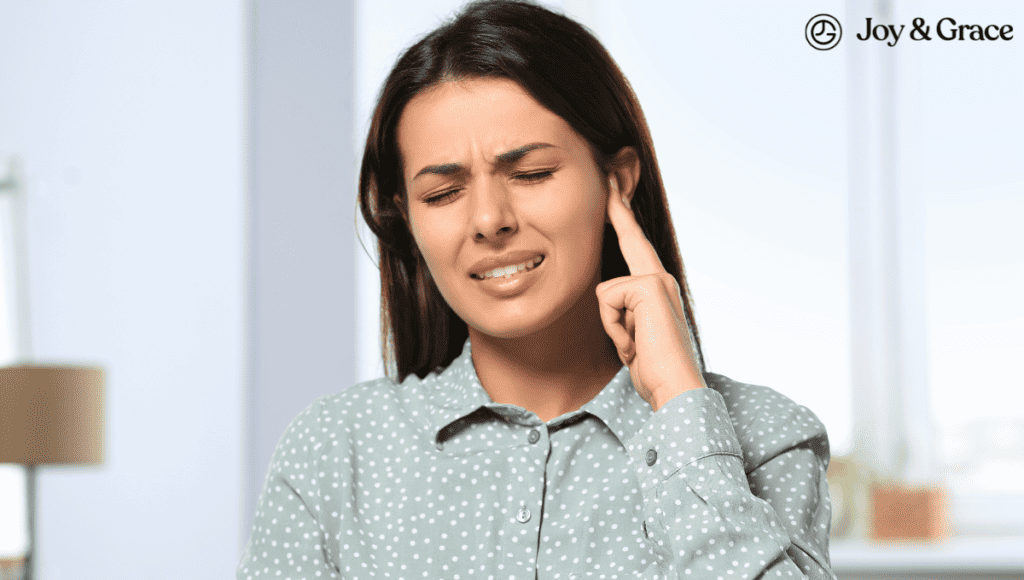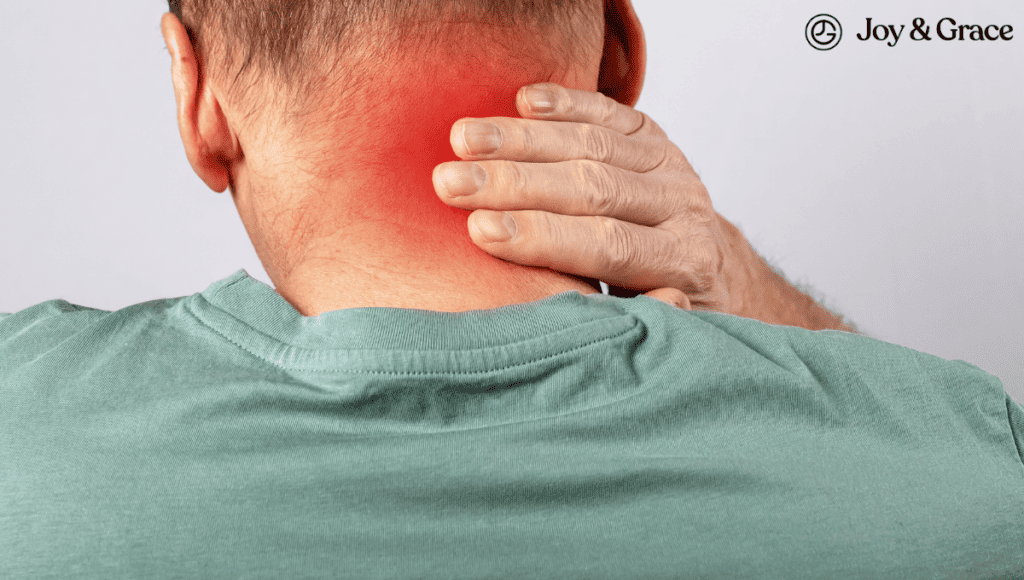Imagine this: You’re enjoying a peaceful day when suddenly, a sharp, throbbing pain pulsates behind your ear.
If this sounds all too familiar, then you're certainly not alone.
On a good day, it's a nuisance, but on a bad day, it can disrupt your entire routine. Let's dive into its causes and find ways to alleviate them.
Why Do I Have Pain Behind My Ear?

Retroauricular pain, or pain behind the ear, can stem from the ear itself or problems with the structures surrounding your ears. These include your upper neck, jaws, and sinuses. Some possible causes include:
- Scalp Muscle Tension and Spasms
Stress can lead to tension and spasms in the muscles of the scalp, some of which are attached right behind the ear. These muscles can cause pain behind the ear when they tense up or spasm. In some cases, it might even feel like the pain is coming directly from the ear itself.
- Trigger Points in Muscle
Trigger points, or "muscle knots," can form in muscles around your ear because of stress and factors like poor posture or overuse. These knots are hypersensitive spots in the muscle that can cause referred pain. Referred pain is pain that is felt in an area away from the actual source.
- Ear Infections
Ear infections arise from inflammation or infection in parts of the ear, caused by bacteria, viruses, or fungi. This leads to swelling and pain in or around the ear. Such infections can sometimes cause pain that feels like it's radiating behind the ear, especially when exacerbated by colds or allergies.
- Temporomandibular Joint (TMJ) Disorders
Your TMJ is the joint that lets your jaw move. It’s in front of your ear, right where your jaw meets your skull. Problems with this joint can cause pain in the surrounding areas, including behind your ear.
- Earwax Impaction
Earwax is a natural substance that everyone produces, though it's not often a topic of conversation.
Sometimes, earwax can get stuck in your ear canal, causing pain behind the ear. Think of it as your body telling you it may be time to clean your ears. Just don't go digging in there with a Q-tip, or you might make things worse!
Other factors that can worsen or cause earwax impaction include:- Poking your ears with your fingers
- A tight or narrow ear canal
- Too much earwax
- Dry earwax
- Tooth Problems
Although they might seem totally unrelated, a pesky toothache can radiate pain signals to your ear.
- Sinus infection
Sinus infections happen when the hollow spaces in your skull (sinuses) get inflamed due to (usually) a viral or bacterial infection. This inflammation can cause pain and pressure behind your ears and throughout your face. Other symptoms include a headache, nasal stuffiness or discharge, and fever.
Aside from pain behind the ear, some of these conditions might also extend down your neck and cause stiffness.
Among these, muscle issues often stand out as the usual suspects. Let's dive deeper into how they contribute to that pesky pain behind the ear.
Why Does The Muscle Behind My Ear Hurt?
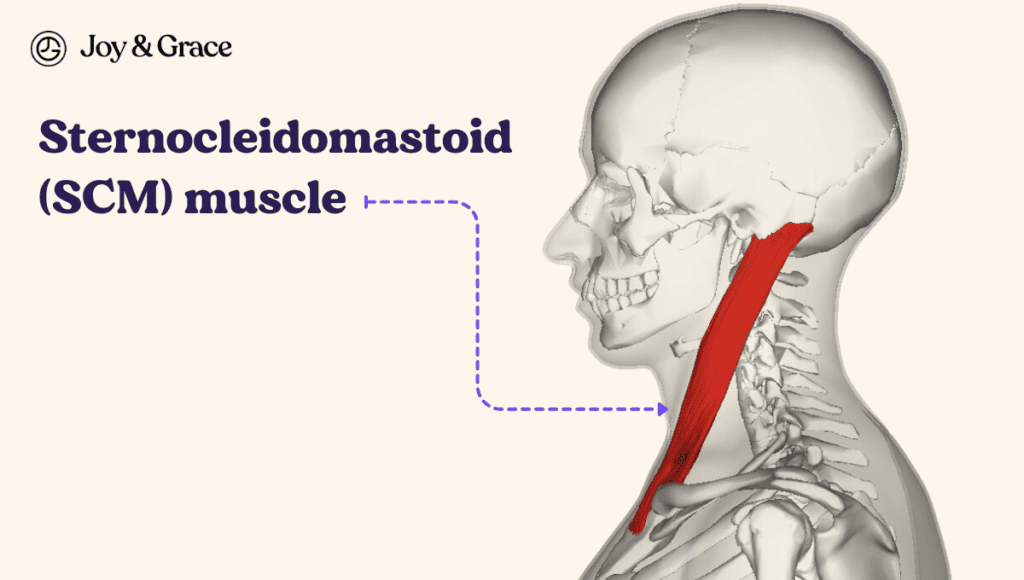
As we previously mentioned, scalp and neck muscle issues frequently result in pain behind the ear. One of the possible culprits is your sternocleidomastoid muscle. Lend us your ears for a while because we’ll have a short anatomy lesson.
By the name itself, the muscle starts from your breastbone (sternum) and connects with your clavicle. It then runs up your neck and inserts into a tiny bone at the side of your skull called the mastoid process. And surprise, surprise, the mastoid process is located right behind your ears.
Because of this, the sternocleidomastoid muscle can cause referred pain in the region behind the ear. Possible causes include:
- Muscle strain or tension
- An injury to the head, neck, or chest
- Poor posture or overuse
- Trigger points, or “muscle knots," caused by myofascial pain syndrome
- Stress and anxiety
So, the next time you feel that muscle pain behind your ear, consider evaluating these potential culprits.
That said, while muscle issues are a common source of discomfort, infections also play a significant role in causing pain behind the ear. Let's explore this further.
Do Ear Infections Cause Pain Behind The Ear?
Yes, ear infections can certainly lead to noticeable pain, both inside and behind the ear.
Outer Ear Infections
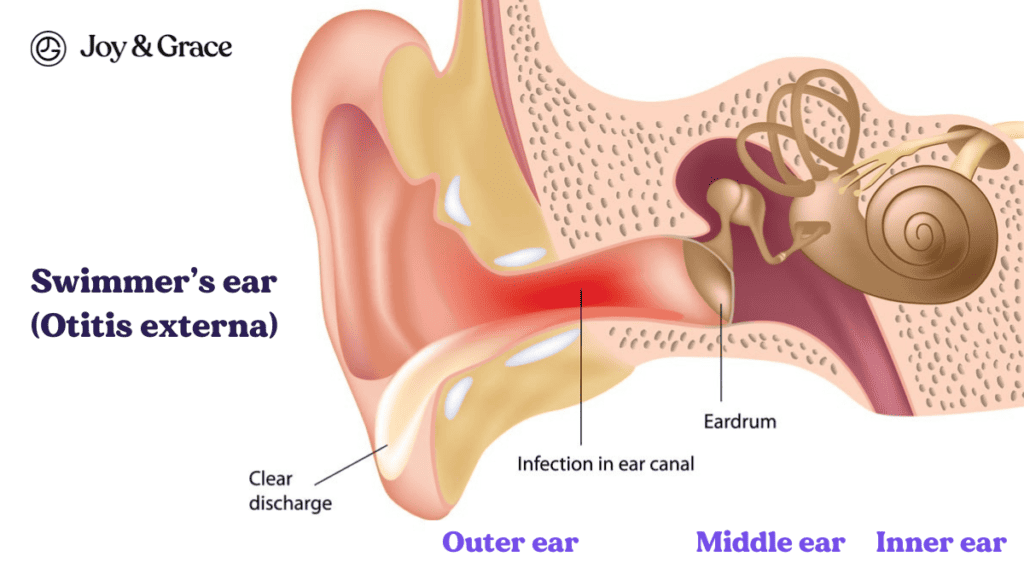
Otitis externa, or swimmer’s ear, can cause tenderness in the outer ear, including behind the ear.
Otitis externa happens when your outer ear canal gets infected and inflamed. It's dubbed "swimmer's ear" as it often occurs after frequent water exposure. The pain from otitis externa can worsen when the ear is touched.
Middle Ear Infections
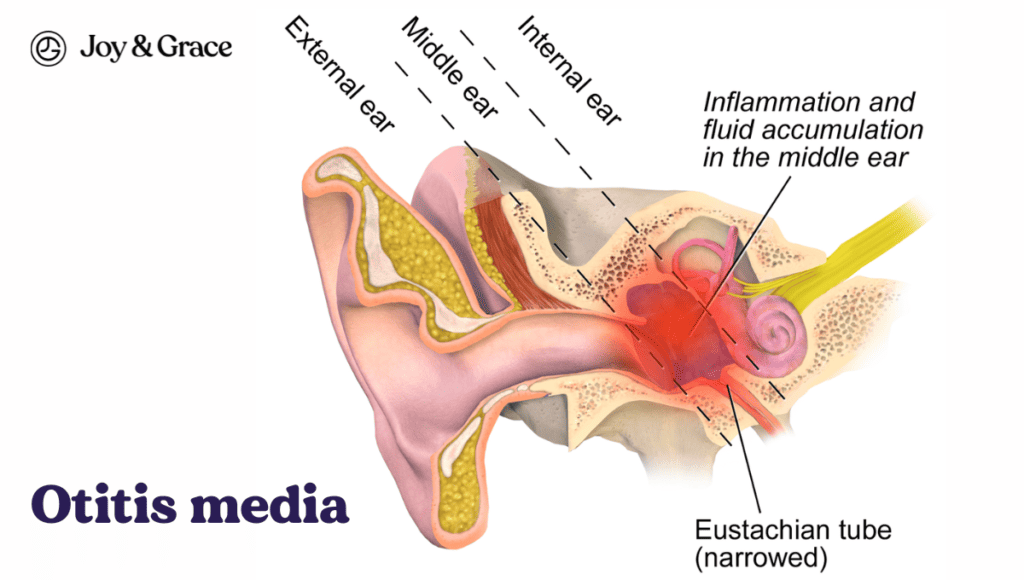
Another infectious cause is otitis media. In contrast to otitis externa, otitis media is the infection and inflammation of the middle ear. The middle ear is located right behind the eardrum. This can cause an intense earache and pain behind the ear.
This is usually due to a buildup of pressure inside your ear. Both the left and right ears can be affected. Other symptoms of ear infections can include:
- Fever
- Discharge from the ear
- Swelling
- Headache
- Hearing loss
Eustachian Tube Dysfunction
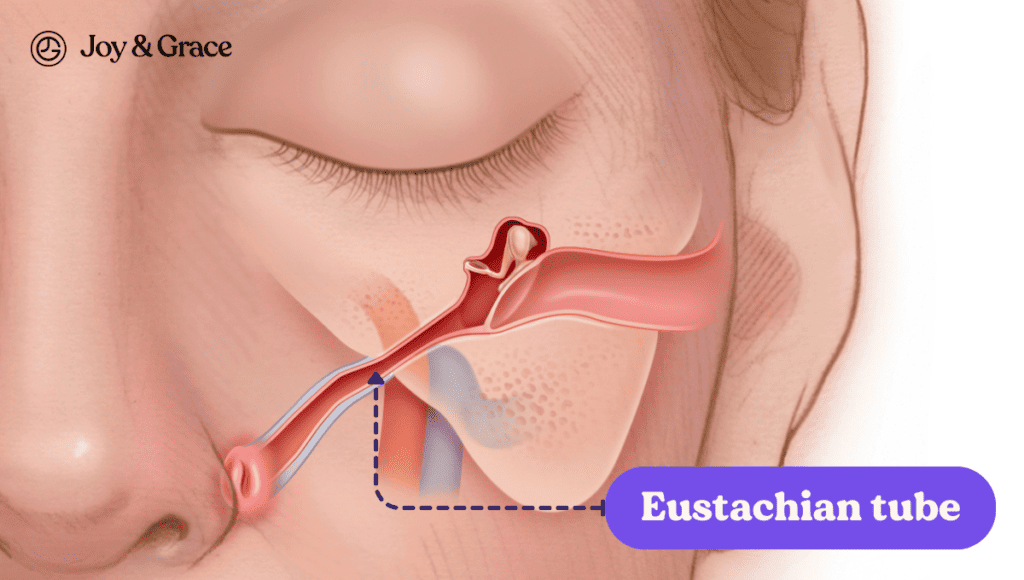
Your middle ear has a passage connecting to the upper part of your throat called the eustachian tube. The eustachian tube is a small canal connecting the middle ear to the back of the nose and throat.
Its primary function is to equalize the air pressure in the middle ear with the outside air pressure, which is essential for our hearing.
When this tube gets clogged, it can lead to ear pain that can travel down your neck.
Mastoiditis
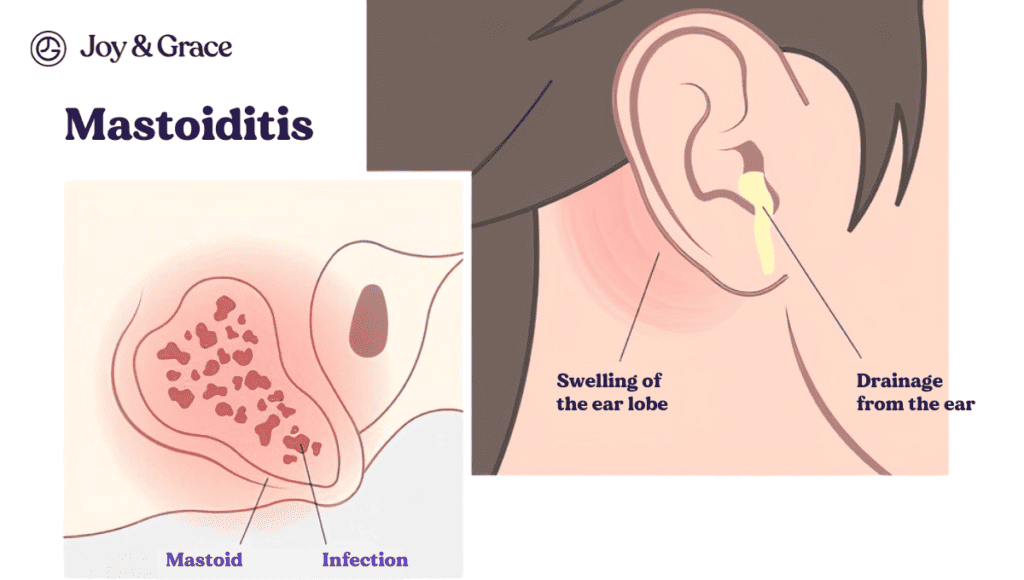
Another infection associated with retroauricular pain is mastoiditis.
Remember the mastoid process? Well, parts of the bone are actually hollowed out into “air cells” that help drain mucus from the middle ear. If otitis media is left untreated, the infection can travel to the mastoid bone, causing mastoiditis.
Common symptoms of mastoiditis include:
- Pain or tenderness behind the ear
- Swelling or redness behind the ear
- Fluid or pus draining from the ear
- Fever
- Hearing loss in the affected ear
- A feeling of fullness or discomfort in the ear
Who is Typically Affected by Mastoiditis?
Mastoiditis can occur in individuals of any age, from infants to the elderly. However, it is more commonly observed in children, especially those under the age of 2.
This is partly because children's immune systems are still developing. This makes them more susceptible to infection.
Nevertheless, it's crucial to understand that anyone, regardless of age, can develop mastoiditis, especially if a middle ear infection goes untreated.
The introduction of pneumococcal vaccines has reduced the incidence of mastoiditis in many parts of the world.
Why Do I Have A Painful Lump Behind My Ear?
You may sometimes notice a painful lump behind your ear when you have an ear infection. This can be from a swollen mastoid bone or swollen lymph nodes (lymphadenopathy).
However, this isn’t always the case. A painful lump behind the ear can also be due to:
- Acne (yes, we can get acne behind the ears)
- Muscle knots or trigger points
What Nerve Causes Sharp Pain Behind Ear?
Pain behind the ear can also be due to issues with one of the numerous nerves that connect with the ear.
Bell’s Palsy
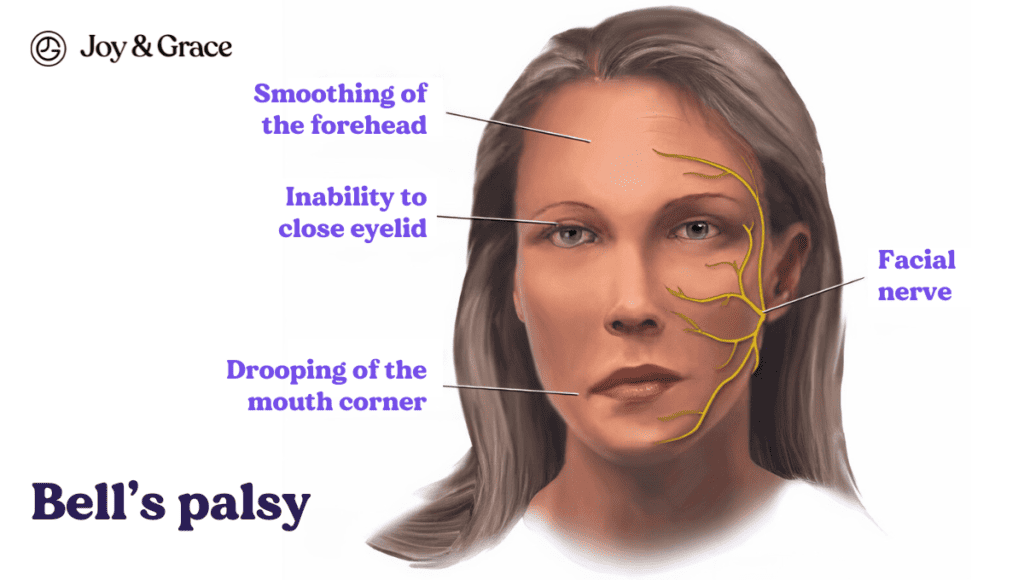
Retroauricular pain has been reported in more than half of patients with Bell’s palsy. Bell’s palsy is characterized by paralysis and weakness of one side of the face due to facial nerve problems.
Besides pain, Bell's palsy can bring about:
- Facial drooping, especially around the mouth or eye
- Difficulty closing one eyelid
- Altered sense of taste
Reactivation of Chickenpox - Ramsay-Hunt syndrome
Another condition that can affect your facial nerves is Ramsay-Hunt syndrome.
Ramsay-Hunt syndrome is a condition related to the chickenpox virus. After an individual has chickenpox, the virus can remain dormant in the body and later reactivate as shingles. In rare instances, this reactivation affects the facial nerves, leading to Ramsay-Hunt syndrome.
In up to 55% of patients with this syndrome, ear pain is often the initial symptom. This is typically followed by facial paralysis and a rash.
However, luckily less than 1% of all shingles cases evolve into Ramsay-Hunt syndrome.
Glossopharyngeal Neuralgia
Another nerve that may cause pain behind the ear is the glossopharyngeal nerve.
This nerve supplies the tongue, throat, and middle ear. An extremely rare condition involving this nerve called glossopharyngeal neuralgia can cause pain behind the ear, tongue, and throat.
The pain from this condition usually comes and goes and can last from a few seconds to a few minutes.
Occipital Neuralgia
Lastly, pain behind the ear can also be due to a problem with your occipital nerves. Occipital neuralgia can cause pain behind your ears and a stiff neck.
How Is Pain Behind The Ear Diagnosed?
Diagnosing pain behind the ear often involves a detailed look into your symptoms and medical history.
Medical History
First, your doctor will ask about the nature and intensity of the pain. They will also ask about any related symptoms. It’s important to be completely transparent and thorough about your symptoms.
Physical Examination
The next step in the process is a physical exam. Your doctor will usually look inside your ears using an otoscope. They may also gently touch around your ear, the base of your skull, and down your neck. They might also check if the pain worsens when you move your neck, open your jaw, or touch your ear.
Further Testing
Further diagnostic tests might also rule out or confirm certain medical conditions. This can include imaging tests like X-rays, CT scans, or MRIs. These tests can help identify structural abnormalities or infections in the ear.
Remember, an accurate diagnosis is key to addressing your pain. Don’t be afraid to seek medical advice if your pain bothers you.
How Do I Know If I Have An Infection Behind My Ear?
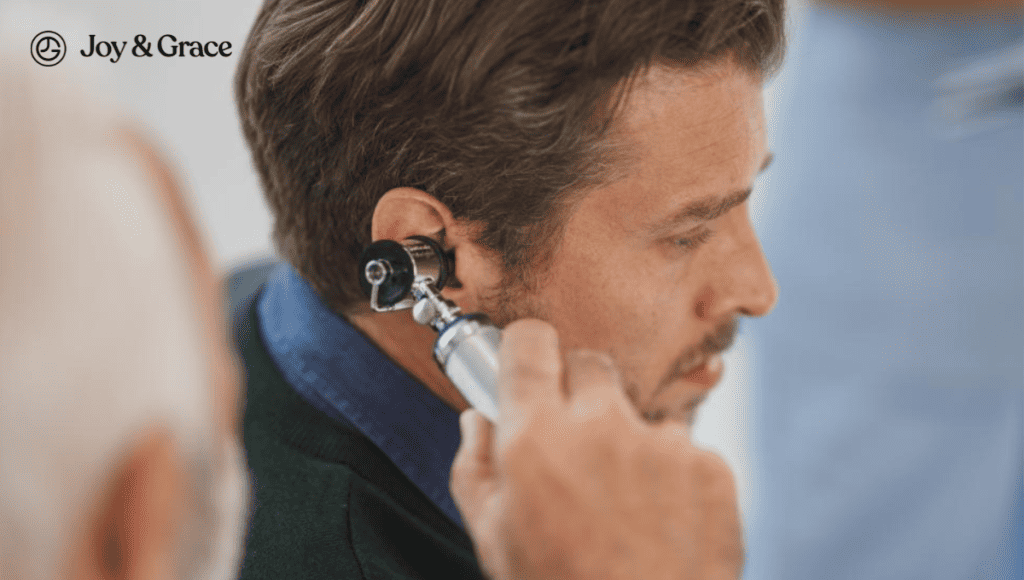
Detecting an ear infection inside or behind your ear requires going to the doctor.
However, it may be easier to spot an ear infection than the other causes we mentioned. You just have to pay close attention to your symptoms. Some symptoms that are highly characteristic of an infection behind the ear include:
- Ear discharge
- A feeling of fullness in the ear
- Redness and swelling behind the ear
- Fever
- Hearing loss
- A lump behind the ear
The diagnosis of an ear infection is usually clinical. This means these conditions are typically diagnosed based on the signs and symptoms observed during a check-up without requiring specialized tests.
In severe or complicated cases, additional tests can help confirm the diagnosis and determine the extent of the infection.
How Do I Stop The Pain Behind My Ear?
The best way to stop pain behind the ear is to tackle the underlying cause. For example, ear pain from dental problems (such as dental infections) may require a visit to a dentist. Meanwhile, persistent pain from an infection may require a totally different approach, such as antibiotic therapy.
However, some simple methods may help relieve pain temporarily until you get a proper diagnosis. These include:
- Rest and Relaxation
Make sure you're getting enough rest, and try relaxation techniques like deep breathing or meditation to reduce stress.
- Pain Relief Medicine
Over-the-counter pain relievers like acetaminophen or ibuprofen might help reduce pain and inflammation. Follow the directions for the right amount to take, and talk to a pharmacist or doctor if you are worried about how this medicine might affect other medications you’re taking.
- Warm or Cold Compress
Applying a warm or cold compress to the affected area might help alleviate pain. Some people find relief with a warm, damp cloth, while others prefer cold packs. However, if there's swelling and redness present, it's advisable to avoid using heat.
- Ear Drops
Some OTC ear drops might help with pain from an infection or inflammation. However, it’s important to have a confirmed diagnosis before using them. Your doctor might also advise using prescription ear drops that contain steroids or antibiotics.
- Change your sleeping position
Try not to sleep on the side where your ear hurts. If your ear hurts on the left side, lie on your right. You can also try adding height to your pillows to raise the affected ear.
- Avoid irritants
Certain irritants might worsen the pain and inflammation present in ear infections. Try to minimize your exposure to potential allergens such as dust, pollen, certain foods, and animal dander.
Keep in mind that these methods won’t work for all causes. Please see a medical professional immediately if you have persistent or severe pain behind your ear.
How Can I Stop Nerve Pain Behind My Ear?
While the simple methods mentioned above can help relieve nerve pain behind the ear, they still require proper medical evaluation and treatment.
Sometimes, prescription medications and specialized treatments, like nerve blocks, might be needed.
How Do I Get Rid Of An Infection Behind The Ear?
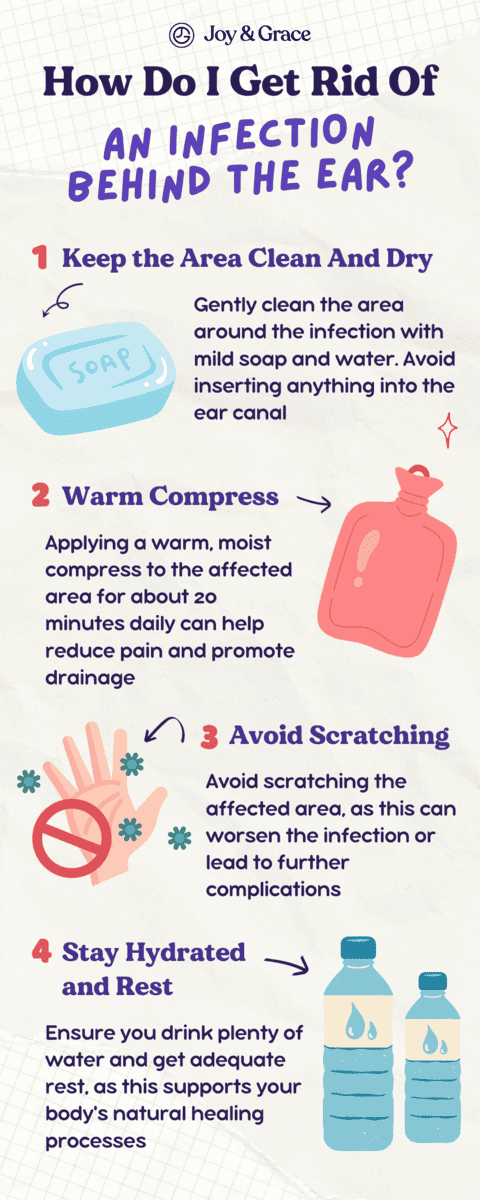
Like nerve pain, the above methods can help with an ear infection. Antibiotics aren’t usually used, as most cases go away on their own.
However, you may be prescribed antibiotics if the infection doesn’t clear up within two to three days.
A case of mastoiditis might need hospitalization and close monitoring. It’s definitely something you don’t want to handle on your own.
Aside from antibiotics, here are some things to keep in mind:
- Keep the Area Clean And Dry
Gently clean the area around the infection with mild soap and water. Avoid inserting anything into the ear canal. Try to avoid any activities that could lead to water entering your ear, such as swimming. It’s not called a swimmer’s ear for nothing.
- Warm Compress
Applying a warm, moist compress to the affected area for about 20 minutes daily can help reduce pain and promote drainage.
- Avoid Scratching
Avoid scratching the affected area, as this can worsen the infection or lead to further complications.
- Stay Hydrated and Rest
Ensure you drink plenty of water and get adequate rest, as this supports your body's natural healing processes.
Should I Be Worried About Pain Behind The Ear?
If you're experiencing pain behind the ear, it's natural to feel concerned. The seriousness of this pain largely depends on its underlying cause, which can vary. Some causes are minor and easily treatable, while others might require medical attention.
For example, ear pain from muscle strain or tooth problems is generally less severe and can be managed with appropriate dental or medical care, physical therapy, or lifestyle changes.
Most ear infections are also not serious and can be treated with antibiotics. However, they can lead to complications such as mastoiditis if left untreated. And it doesn’t stop there. Mastoiditis can potentially spread to the brain, leading to meningitis.
While pain behind the ear can vary widely in its causes and severity, it is crucial to pay attention to accompanying symptoms and seek medical advice if needed.
When Should I Go To The ER For Pain Behind The Ear?
In general, you should seek medical attention if your ear pain persists or worsens over two to three days. Aside from that, certain signs indicate you should go to the emergency room right away:
- Sudden and intense pain
- High fever
- Dizziness
- Confusion
- Nausea and vomiting
- Severe headache
- Difficulty speaking
- Weakness in your face or body
These symptoms could indicate a serious condition, such as meningitis. Additionally, if the pain results from an injury, like a fall or a blow to the head, it's important to go to the ER.
Wrap-up
Your tiny ears certainly know how to make a racket when something is wrong! Pain behind the ear might be easy to overlook, but it’s an issue that can seriously impact your health. Whether it’s a sharp jab or a dull throb, this discomfort can stem from various sources.
It can be due to something as simple as a tensed scalp muscle or something more sinister, like an infection. Oddly enough, that ache behind your ear might even be a message from your neck or teeth, trying to get your attention.
Depending on the cause, some simple home lifestyle changes might work their magic. But if the pain comes with other symptoms, it’s best to seek the help of a professional.
